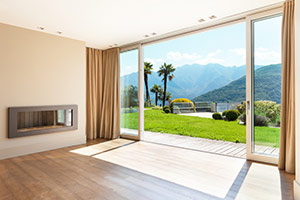 Good indoor air quality is essential for a healthy home and, if you are anything like me, you like to let some fresh air in every now and then. But with home building envelopes getting tighter to seal out exterior air in order to conserve energy, many new home owners are rightly concerned that building a home that is airtight will reduce the quality of their indoor air.
Good indoor air quality is essential for a healthy home and, if you are anything like me, you like to let some fresh air in every now and then. But with home building envelopes getting tighter to seal out exterior air in order to conserve energy, many new home owners are rightly concerned that building a home that is airtight will reduce the quality of their indoor air.
Tight Envelopes mean more Efficiency
In an average home, air leakage accounts for 20-40% of the energy usage. Whether you are doing a retrofit or planning a new home, opt for the tightest envelope your budget will allow. Use raised heel trusses to allow for denser attic insulation and ICF for your basement and wall systems.
Don’t worry about making your building too tight. No matter how tight your building envelope is, some air will come in around the doors and windows. If you stick to a minimum 10% glass-to-wall ratio, you should have enough air leakage to ensure a healthy indoor atmosphere.
Even if you do opt for mechanical ventilation, it will cost you less than a leaky home and you can control moisture.
Leaky Envelopes can Cause Mold and Mildew
Not only do leaky homes waste money, but they can cause damage to the structure too. You see when warm, humid air from outside (over the summer months) or from inside (in the winter) is able to leak into the wall systems and the attic, it cools down and the water vapor condenses. Introducing moisture into these areas could result in the formation of mold and mildew.
The spores from mold and mildew are among the worst indoor air pollutants. Once mold and mildew have formed, you need a professional team to remove it and restore your home which could cost you a fortune.
A Breath of Fresh Air
It’s essential that you are cognizant of the quality of your indoor air. As you clean your home, chemicals in the cleaning products are released, volatile organic compounds (VOCs) are also released by furniture, building materials, paints and air fresheners. These chemicals mix with the carbon dioxide from your breathing to create unhealthy living conditions.
The best option is to have your indoor air tested to see if the natural air leakage of the home is enough to create a healthy environment. If you find that your indoor air is polluted, you can utilize a whole-house ventilation system which removes air in the most polluted areas (usually bathrooms and kitchens) and delivers fresh air exactly where you need it most.
You can also recover heat from the air you are exhausting from the home and use it to heat fresh, incoming air during the winter months or cool incoming air in the summer. Use a heat-recovery ventilator or air-to-air heat exchanger to save the energy to pre-condition fresh air.